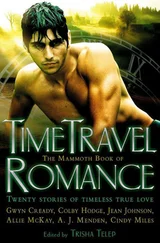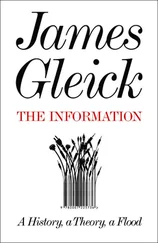James Gleick - Time Travel
Здесь есть возможность читать онлайн «James Gleick - Time Travel» — ознакомительный отрывок электронной книги совершенно бесплатно, а после прочтения отрывка купить полную версию. В некоторых случаях можно слушать аудио, скачать через торрент в формате fb2 и присутствует краткое содержание. Год выпуска: 2016, Издательство: Knopf Doubleday Publishing Group, Жанр: Старинная литература, на английском языке. Описание произведения, (предисловие) а так же отзывы посетителей доступны на портале библиотеки ЛибКат.
- Название:Time Travel
- Автор:
- Издательство:Knopf Doubleday Publishing Group
- Жанр:
- Год:2016
- ISBN:нет данных
- Рейтинг книги:5 / 5. Голосов: 1
-
Избранное:Добавить в избранное
- Отзывы:
-
Ваша оценка:
- 100
- 1
- 2
- 3
- 4
- 5
Time Travel: краткое содержание, описание и аннотация
Предлагаем к чтению аннотацию, описание, краткое содержание или предисловие (зависит от того, что написал сам автор книги «Time Travel»). Если вы не нашли необходимую информацию о книге — напишите в комментариях, мы постараемся отыскать её.
Time Travel — читать онлайн ознакомительный отрывок
Ниже представлен текст книги, разбитый по страницам. Система сохранения места последней прочитанной страницы, позволяет с удобством читать онлайн бесплатно книгу «Time Travel», без необходимости каждый раз заново искать на чём Вы остановились. Поставьте закладку, и сможете в любой момент перейти на страницу, на которой закончили чтение.
Интервал:
Закладка:
Maxwell’s equations for electromagnetic fields worked so beautifully, but by the 1930s and 1940s physicists were having problems in the quantum realm. They understood very well the equations connecting the energy of the electron with its radius. So they could compute the size of the electron quite precisely. Only, in quantum mechanics, it looks as though the electron has no radius at all: it is a point particle, zero-dimensional, taking up no space. Unfortunately for the mathematics, this picture led to infinities—the result of dividing by zero. To Feynman it seemed that many of these infinities came from a circular effect of the electron upon itself, its “self-energy.” To eliminate these nasty infinities, he had the idea of simply not allowing electrons to act upon themselves. This meant eliminating the field. Particles would be allowed only to interact with other particles, directly. Not instantaneously: relativity had to be obeyed. The interactions occurred at the speed of light. That’s what light is: interaction between electrons.
Feynman explained later, in Stockholm, upon receiving the Nobel Prize:
It was just that when you shook one charge, another would shake later. There was a direct interaction between charges, albeit with a delay. The law of force connecting the motion of one charge with another would just involve a delay. Shake this one, that one shakes later. The sun atom shakes; my eye electron shakes eight minutes later, because of a direct interaction across.
The problem—if it was a problem—was that the rules for interaction worked backward in time as well as forward. They were symmetrical. This is the kind of thing that happens in Minkowski’s world, where past and future are geometrically identical. Even before relativity, it was well known that Maxwell’s equations for electromagnetism and, before that, Newton’s for mechanics were symmetrical with respect to time. Wheeler had toyed with the idea that the positron—antiparticle of the electron—was an electron moving backward in time. So Johnny and Dick plunged ahead with a theory in which electrons appeared to be shining both forward into the future and back into the past. “I was enough of a physicist at that time,” Feynman continued, “not to say, ‘Oh, no, how could that be?’ For today all physicists know from studying Einstein and Bohr that sometimes an idea which looks completely paradoxical at first, if analyzed to completion in all detail and in experimental situations, may, in fact, not be paradoxical.”
In the end, the paradoxical ideas turned out not to be necessary for the theory of quantum electrodynamics. As Feynman well understood, such theories are models: never complete, never perfect, not to be confused with reality, which remains out of reach.
It always seems odd to me that the fundamental laws of physics, when discovered, can appear in so many different forms that are not apparently identical at first, but, with a little mathematical fiddling you can show the relationship….There is always another way to say the same thing that doesn’t look at all like the way you said it before….
Many different physical ideas can describe the same physical reality.
On the side another issue loomed. Thermodynamics, the science of heat, offered a different version of time. Sure, the microscopic laws of physics say nothing about time having a favored direction. (Some would say “fundamental laws,” rather than “microscopic laws,” but that is not quite the same thing.) The laws of Newton, Maxwell, and Einstein are invariant with respect to past and future. Changing the direction of time is as easy as changing a sign from plus to minus. The microscopic laws are reversible. If you make a movie of a few colliding billiard balls or interacting particles, you can run the film through the projector backward and it will look fine. But make a movie of a cue ball breaking the rack—fifteen balls, at rest in a perfect triangle, sent flying to every corner of the table. If you play that one backward, it looks comically unreal: the balls careering about and then assembling themselves as if by magic into regimental order.
In the macroscopic world, the world we inhabit, time has a definite direction. When the technology of cinema was still new, filmmakers discovered they could create amusing effects by reversing their strips of celluloid. The Lumière brothers reversed their short Charcuterie mécanique to show a sausage unmade and a pig unbutchered. In a backward movie an omelet could organize into white and yolk and return to the egg, with shell fragments neatly reassembling themselves. A rock flies out of a turbulent pond, a reverse fountain of droplets closing in to seal the hole. Smoke pours down a fireplace into the flames as coals grow into logs. Not to mention life itself: the quintessential irreversible process. William Thomson, Lord Kelvin, saw the problem in 1874—and saw that consciousness and memory were part of the problem: “Living creatures would grow backward, with conscious knowledge of the future, but no memory of the past, and would become again unborn.”
Every so often it is good to remind ourselves that most natural processes are not reversible. They work only one way, forward in time. For starters here is a little list from Lord Kelvin: “friction of solids; imperfect fluidity of fluids; imperfect elasticity of solids [all these imperfects ]; inequalities of temperature, and consequent conduction of heat produced by stresses in solids and fluids; imperfect magnetic retentiveness; residual electric polarization of dielectrics; generation of heat by electric currents inducted by motion; diffusion of fluids, solutions of solids in fluids, and other chemical changes; and absorption of radiant heat and light.” That last is where Johnny and Dick came in.
At some point we have to talk about entropy.
—
THERE’S A CATCHPHRASE, the arrow of time, familiarly used by scientists and philosophers in many languages ( la flèche du temps, Zeitpfeil, zaman ı n oku, ось времени) as shorthand for a complex fact that everyone knows: time has a direction. The phrase spread widely in the 1940s and 1950s. It came from the pen of Arthur Eddington, the British astrophysicist who first championed Einstein. In a series of lectures at the University of Edinburgh in the winter of 1927 Eddington was attempting to comprehend the great changes under way in the nature of scientific thought. The next year he published his lectures as a popular book, The Nature of the Physical World .
It struck him that all previous physics was now seen to be classical physics, another new expression. “I am not sure that the phrase ‘classical physics’ has ever been closely defined,” he told his listeners. No one called it classical until it broke down. (Now “classical physics” is a retronym, like acoustic guitar, dial telephone, and cloth diaper.) *Millennia had gone by without scientists needing special shorthand like “time’s arrow” to state the obvious— the great thing about time is that it goes on. Now, however, it was no longer obvious. Physicists were writing laws of nature in a way that made time directionless, a mere change of sign separating +t from –t. But one law of nature is different: the second law of thermodynamics. That’s the one about entropy.
“Newton’s equations go forwards and backwards, they do not care which way,” explains Thomasina, the teenage prodigy invented by Tom Stoppard in Arcadia. “But the heat equation cares very much, it goes only one way.”
The universe tends inexorably toward disorder. Energy is indestructible, but it dissipates. This is not a microscopic law. Is it a “fundamental” law, like F = ma ? Some argue that it is not. From one point of view, laws governing individual constituents of the world—single particles, or a very few—are primary, and laws about multitudes must be derived from them. But to Eddington this second law of thermodynamics was the fundamental law: the one that holds “the supreme position among the laws of Nature”; the one that gives us time.
Читать дальшеИнтервал:
Закладка:
Похожие книги на «Time Travel»
Представляем Вашему вниманию похожие книги на «Time Travel» списком для выбора. Мы отобрали схожую по названию и смыслу литературу в надежде предоставить читателям больше вариантов отыскать новые, интересные, ещё непрочитанные произведения.
Обсуждение, отзывы о книге «Time Travel» и просто собственные мнения читателей. Оставьте ваши комментарии, напишите, что Вы думаете о произведении, его смысле или главных героях. Укажите что конкретно понравилось, а что нет, и почему Вы так считаете.












